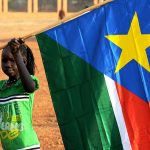The history of Fiji is a compelling narrative of colonization, cultural diversity, and political upheaval. This island nation, located in the heart of the Pacific, has witnessed dramatic shifts, particularly in its political landscape, as it navigated the complex challenges of ethnic tensions, coups, and its eventual transition to a republic.
Understanding the history of Fiji requires delving into its colonial past, the rise of ethnic divisions, and the tumultuous path to independence and beyond.
Early History and European Contact
The history of Fiji stretches back thousands of years, with the first settlers arriving from Southeast Asia and Melanesia around 3,500 years ago. The indigenous Fijians developed a distinct culture, influenced by both Polynesian and Melanesian traditions. These early inhabitants thrived on the islands, establishing communities based on clan systems and agriculture.
European explorers began to arrive in the 17th century, with Dutch navigator Abel Tasman being one of the first to make contact in 1643. However, it wasn’t until the 19th century that sustained European interest in Fiji grew. Missionaries, traders, and settlers started to establish their presence, introducing Christianity and Western ways of life. This laid the groundwork for the eventual colonial rule that would shape the future of Fiji.
Click the link to learn about the history of Nauru.

British Colonization and the Sugar Industry
In 1874, Fiji officially became a British colony. The history of Fiji during this period was marked by significant changes, especially with the establishment of a lucrative sugar industry. The British brought in indentured laborers from India to work on the sugar plantations, which had a profound impact on the demographic makeup of Fiji.
By the early 20th century, Indo-Fijians made up a substantial portion of the population, creating a complex ethnic dynamic between the indigenous Fijians and the Indian laborers. This shift would have lasting consequences, as ethnic divisions would later fuel political and social tensions.
The British also imposed a system of governance that favored the indigenous Fijian chiefs, while the Indian community was largely excluded from political power. This set the stage for future struggles over land rights, political representation, and social equality.
Path to Independence
Fiji gained its independence from Britain on October 10, 1970. The country adopted a parliamentary democracy, and Sir Kamisese Mara, the leader of the Alliance Party, became the first prime minister. However, the history of Fiji post-independence was far from smooth.
The political landscape was dominated by the uneasy coexistence of the indigenous Fijian and Indo-Fijian communities. While efforts were made to balance power between the two groups, the political system was still heavily skewed in favor of the indigenous Fijians. This created a sense of disenfranchisement among the Indo-Fijians, who were often excluded from key political positions.
Ethnic Tensions and the 1987 Coups
The history of Fiji took a dramatic turn in 1987 when Lieutenant Colonel Sitiveni Rabuka led two military coups in quick succession. The catalyst for the coups was the election of a coalition government that included the Fiji Labour Party, which was predominantly Indo-Fijian. Rabuka, along with his supporters, feared that the Indo-Fijians would gain too much political power and undermine the dominance of the indigenous Fijians.
In response, Rabuka staged a coup, overthrowing the government and declaring Fiji a republic. This move was framed as a protection of indigenous Fijian interests, but it also resulted in Fiji’s expulsion from the Commonwealth and the beginning of a period of political instability. The first coup was followed by a second one in September 1987, which further entrenched the divisions between the two communities.
The coups had profound implications for the history of Fiji. The constitution was amended to give greater political power to indigenous Fijians, while Indo-Fijians were marginalized. This created a sense of alienation among the Indo-Fijian community, leading to a large-scale emigration of skilled workers, which had a significant impact on the country’s economy.


The 1990 Constitution and Political Reforms
In 1990, a new constitution was introduced that institutionalized the dominance of indigenous Fijians in politics and land ownership. This constitution further entrenched the ethnic divide, and many Indo-Fijians felt that they were being treated as second-class citizens. The history of Fiji during this period was marked by continued ethnic tension and political instability.
However, by the mid-1990s, there was a growing recognition that the political system needed to change. In 1997, a new constitution was introduced, which aimed to provide more equitable representation for both indigenous Fijians and Indo-Fijians. The reforms were designed to address the grievances of the Indo-Fijian community and ensure that political power was shared more equally.
Despite these reforms, ethnic tensions remained high, and the country’s political landscape continued to be volatile.
The 2000 Coup and Aftermath
The history of Fiji took another dramatic turn in 2000 when George Speight, an indigenous Fijian businessman, led a coup against the democratically elected government of Prime Minister Mahendra Chaudhry, the first Indo-Fijian to hold the office. Speight and his supporters claimed that the Indo-Fijian-dominated government was undermining indigenous Fijian rights and that the country’s political system needed to be reformed.
Speight’s coup was met with widespread condemnation, both domestically and internationally. The coup resulted in the abduction of government officials and the eventual formation of a military-backed government. The coup further deepened the ethnic divide and led to a series of political crises that would shape the history of Fiji for years to come.
Transition to a Republic
In 2006, Fiji experienced yet another coup, this time led by Commodore Frank Bainimarama. Bainimarama, the commander of the Fiji Military Forces, seized power after accusing the government of corruption and mismanagement. Unlike previous coups, Bainimarama promised to reform Fiji’s political system and address the country’s ethnic divisions.
In 2013, Fiji adopted a new constitution that abolished the system of communal voting and introduced a more inclusive, one-person-one-vote system. This was seen as a significant step toward healing the ethnic rift that had plagued the country for decades.
Bainimarama remained in power after winning the 2014 elections, which were the first since the 2006 coup. His government has focused on economic reforms, infrastructure development, and efforts to strengthen Fiji’s position on the global stage.
Conclusion
The history of Fiji is a complex tale of colonialism, ethnic strife, and political upheaval. From British colonization to the turbulent years marked by coups and constitutional reforms, Fiji’s journey has been shaped by its diverse population and the ongoing struggle to find a balance between indigenous Fijians and Indo-Fijians.
To discover more about the history of Fiji either join our Least Visited Countries Tour, or check out our bespoke Fiji Tours.





